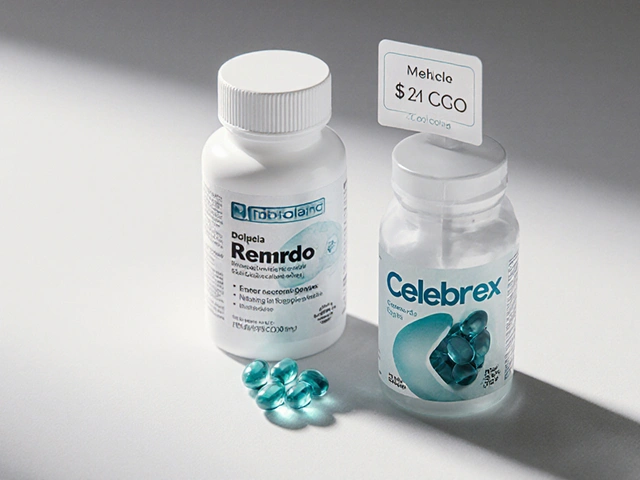Picture this: you’re crushing your routine, logging miles, reps, or laps—until one day, fatigue smacks you like a brick wall. Your heart’s pounding, muscles feel heavier, and no pep talk fixes the sluggishness. What if your problem isn’t motivation or training, but a sneaky drop in your blood’s iron? This isn’t just an occasional hiccup for athletes—it’s a real performance limiter. Sure, we know about protein, carbs, and hydration, but iron often hides in their shadow, silently running the show. Forget about permanent exhaustion or brain fog—just one missing mineral can steal your edge without mercy. Let’s get to the truth about why every athlete seriously needs to care about iron, pronto.
Why Iron Matters: The Science Athletes Can't Skip
Every cell in your body needs oxygen to turn food into energy. Here’s where iron steps up. It’s the core ingredient in hemoglobin, the protein that lets your red blood cells shuttle oxygen from lungs to muscles. No iron, no hemoglobin, and suddenly your oxygen traffic jams right where you need it most—during fast runs, bike climbs, or sprints on the field. Athletes burn through more oxygen than folks on the couch, so the demand is huge.
You might guess pro cyclists or marathoners risk running low, but recreational athletes—yep, even weekend warriors—aren’t immune. The kicker: women are way more at risk, thanks to menstrual blood loss. A review in The American Journal of Clinical Nutrition found that up to 35% of female athletes show at least some degree of iron deficiency, while for endurance runners it's even higher. Sweating, the impact of hard training (which can break up red blood cells), and even gut microbleeds caused by repetitive movement up the odds.
If you’ve ever craved ice or chalk, felt constantly tired, or noticed you can't shake off a cold, those might be red flags. A dip in iron doesn't just mean mild tiredness—it drags your body’s whole energy system. Want some context? The World Health Organization says anemia—the full-blown, clinical version of iron shortage—affects about 25% of the world’s population. In athletes, even borderline low iron can tank performance by up to 20%, according to a study done at the University of Otago, New Zealand.
| Population | Estimated Iron Deficiency (%) |
|---|---|
| Female endurance athletes | 35-50 |
| Male endurance athletes | 5-10 |
| Adolescent athletes (overall) | 20-30 |
| Non-athletes (general population) | 10-18 |
So, low iron saps your stamina and brain focus, but did you know it can also increase risk of injury? Oxygen-starved muscles are more vulnerable to strains. Recovery takes longer, too. For athletes aiming for the next personal best, it’s not about just “enough” iron—it’s about optimal levels to nail every session.
Iron Deficiency: Sneaky Symptoms and How It Wrecks Performance
Iron drains you slowly. Many athletes chalk up their symptoms to overtraining, a bad night’s sleep, or life stress. But unless you know what to look for, dropping iron can go unchecked for months. You notice you’re out of breath faster on hills, or your regular tempo suddenly feels brutal. You might blame your shoes or blame the weather, but inside, your muscles are desperate for oxygen.
Look for these signs:
- Chronic fatigue—even after enough rest
- Shortness of breath during workouts you used to ace
- Pale skin, especially around the gums or eyelids
- Brittle nails, hair loss
- Frequent illnesses or feeling cold more often
- Headaches, dizziness, or brain fog
- Pounding heart or feeling heartbeats during training
- Strange cravings (like ice, chalk, or dirt—yes, really!)
The body prioritizes oxygen for your heart and brain when iron drops. That means your muscles and the rest of your system get less oxygen, and you hit the wall way sooner, even if your training plan is perfect. In teens, iron deficiency has been linked to poor concentration and lower grades, so it’s not just an athletic issue. And it hides on blood tests: classic symptoms may show up even when you’re above the “anemia” threshold. Experts call this “iron depletion,” and it’s notorious among endurance athletes.
Now, here’s something most people miss: even mild iron deficiency can mess with muscle recovery. A study in Medicine & Science in Sports & Exercise showed iron-deficient women took longer to bounce back from hard workouts, with higher soreness scores and more muscle fatigue. As iron dips lower, joint pain or strange muscle aches can start, but many brush it off as training-related.
Another wild fact: some sports, like distance running, actually break down red blood cells when your foot strikes the ground—called "foot-strike hemolysis." Swimmers lose small amounts of iron through pool water exposure. Intense sweating? That’s a trickle loss that adds up, especially in summer. Add restrictive diets, like vegan or vegetarian eating, and you ramp up the risk again because plant-based iron (non-heme) isn’t absorbed as easily as iron from animal sources (heme).
Being proactive matters. A lot of athletes wait until their performance tanks, but prevention—catching it before levels dip into trouble—is the real game-changer. Regular blood checks (every 6 to 12 months for high-risk groups) and paying attention to how you feel can head off problems before they end your race season early.

How to Boost and Maintain Healthy Iron Levels
So, how do you keep your iron stores topped up? Step one is eating the right foods, but not all iron-rich foods work the same. Heme iron, found in red meat, chicken, turkey, and fish, is absorbed much more efficiently than non-heme iron from beans, lentils, spinach, and fortified cereals. For example, if you eat 3 ounces of grilled beef, you might absorb 2 milligrams of iron. But for the same amount of iron from spinach, you’ll probably only get a fraction of it into your bloodstream.
Here’s the kicker: pairing iron-rich foods with vitamin C (think bell peppers, oranges, or strawberries) turbocharges iron absorption. Drinking coffee or tea with meals slows it down, as does calcium from dairy. Timing matters. Eating your iron at the same time as high-calcium foods? Not ideal.
Check these ideas to boost your iron intake:
- Add a serving of lean beef or turkey to salads or sandwiches
- Mix beans into pasta or grain bowls, and squeeze lemon juice on top
- Start the day with iron-fortified cereal and a glass of orange juice
- Bake with blackstrap molasses (surprisingly rich in iron!)
- If vegan/vegetarian, use a cast-iron pan—tiny amounts of iron leach into food
Supplements can help, but don't grab them blindly because too much iron is dangerous—it can damage the liver, heart, and pancreas. Blood work should guide your plan. The key numbers? Look at ferritin (your body’s iron storage), serum iron, and hemoglobin. Endurance athletes may want ferritin to be above 30-40 ng/mL, but talk with your doctor for your specific sport needs.
Here’s an example daily meal plan for boosting iron:
| Meal | Food | Iron (mg) |
|---|---|---|
| Breakfast | Oatmeal (fortified) + strawberries | 6 |
| Snack | Almonds + orange | 1 |
| Lunch | Grilled chicken salad + chickpeas + lemon dressing | 4 |
| Dinner | Beef stir-fry + broccoli | 5 |
| Total | 16 |
This covers most athletes' daily iron needs (8 mg for men, 18 mg for women). If you’re training hard or menstruating, your goal might be higher. Quick tip: iron supplements work best on an empty stomach, but they can cause stomach upset. If you feel queasy, try a lower dose with some food or switch to chelated iron, which is gentler.
One last thing—check labels if you eat lots of processed foods or snacks. Some are fortified with iron, giving you a little boost where you might least expect it (even breakfast bars or instant oatmeal!). Counting up those little bits can add up over time.
Inequalities, Risks, and Myths: Who Should Be Most Careful?
Everyone who trains hard is at some risk, but some groups should be especially vigilant. Female athletes, because of monthly losses, top the list. Teenage athletes juggle rapid growth with intense training, pulling even more iron from their already busy systems. Plant-based athletes and those with a history of stomach issues (like celiac or Crohn’s) are next up, since gut absorption can be much lower. High-altitude training or frequent overseas racing? Your body’s iron use is higher trying to make more red blood cells, so extra checks are a good idea there, too.
Don’t fall for these common myths. Myth one: “I eat tons of spinach, so I’m set.” Non-heme iron from plants isn’t absorbed nearly as well as what you get from meat and fish, even if the nutrition label looks impressive. Myth two: “Men don’t get low iron.” They can, especially with heavy endurance training, restrictive diets, or undiagnosed gut issues. And then there's the supplement trap—some believe more is always better, but iron overload can hit hard, especially without medical supervision, leading to something called hemochromatosis. Symptoms can look similar to deficiency at first—tired, achy, and worn out.
There’s also a misconception that energy gels and drinks for athletes all boost iron. Most don’t. Check the ingredient list or talk to a sports dietitian if you’re unsure; sometimes electrolyte powders throw in a little iron, but usually not enough to make a dent if you’re already low.
The wildcard? Genetic differences. Some people naturally absorb less iron, regardless of diet, and family history can offer clues. If you’ve got siblings or parents with anemia, it’s worth getting checked proactively.
And just a final bit of “insider” perspective: small aches, mental fuzziness, poor grades, or struggling sleep can all sneak up long before full-blown anemia sets in. If your progress stutters, iron status is one of the first labs to check, right alongside vitamin D and B12.
The best athletes I know don’t just rely on symptoms; they make checking iron part of their regular health routine—especially building up to big races or if training loads spike. With a few adjustments and attention, you can keep your edge and avoid letting iron be the reason you fall short of your goals. In sports, the tiniest mineral can make all the difference—and missing it isn’t just a minor slip. It’s a critical game-changer for anyone who cares about performance.








12 Comments
Vandita Shukla
July 18, 2025 AT 19:33Honestly, this article nails it on the head about how crucial iron is for athletes. I feel like so many people, even those who train hard, completely overlook how iron deficiency can sneak up and wreck performance. It’s not just about fatigue; the cognitive effects and recovery delays are brutal.
Also, I appreciated the breakdown of who’s most at risk. Women athletes especially need to pay attention because of menstruation, but even vegetarians need to be extra cautious due to lower iron bioavailability from plant sources. I found it pretty interesting that the article included practical tips for maintaining levels, like pairing iron-rich foods with vitamin C to boost absorption.
Sometimes I think sports nutrition gets so complicated that people give up, but this piece made it feel doable. Honestly, ignoring iron—especially if you’re grinding for improvements—is just shortsighted. Great read that should be required for anyone serious about peak performance.
Jessica Forsen
July 18, 2025 AT 22:53I have to say, I've always thought iron was just something old folks worried about, not athletes. But reading this, it totally makes sense why it’s a big deal. They made it pretty clear how subtle iron deficiency symptoms can be, right? Like, you might just feel a little tired and chalk it up to training hard, when it’s actually your body screaming for help.
Honestly, it’s the kind of info that should be blasted everywhere. I love how they didn’t just throw science jargon at us but made it real — signs, risks, food tips, supplements. Super useful. If you’re serious about gains or performance, ignoring your iron status is just dumb.
And hey, for anyone who thinks they’re eating enough iron, think twice. Absorption is tricky, and not all iron’s created equal. So yeah, nice article to wake people up.
Deepak Bhatia
July 19, 2025 AT 02:06This article really breaks down a really important point about sports and nutrition: iron matters more than most realize. I’ve seen so many people pushing through workouts but feeling drained because their iron is low. It’s tough because the effects build up slowly and you don’t notice right away.
One thing that stood out for me was the mention of recovery. Recovery is everything, right? If your iron is off, your muscles won’t get the oxygen they need for repair and growth, so all the training in the world might not pay off.
Also, the tips about combining iron foods with vitamin C is simple but often ignored advice that can make a real difference. It’s also good that the article covers who’s at risk — that helps athletes know when to get checked. Overall, a very helpful post.
Samantha Gavrin
July 19, 2025 AT 06:40I’m honestly always suspicious when someone says “surprising facts” about something so well-studied like iron. Makes me wonder if there’s some hidden agenda from supplement companies. Like, are these so-called “latest data” really new or just repackaged info to hype sales?
Regardless, the importance of iron can’t be denied for serious athletes. But I do think people need to be cautious about rushing into supplements without proper testing because iron overload is a real risk too, and it can be toxic.
What I liked is that the article seems to stress practical advice – test first and then supplement if needed, rather than guessing. I just wish more articles stressed that balance and didn’t throw all the blame on deficiency. Iron is complicated, and the body’s regulation is pretty smart but can get overwhelmed.
NIck Brown
July 19, 2025 AT 10:50Honestly, if you’re an athlete and not paying attention to your iron status, you’re making a rookie mistake. Iron is literally foundational for aerobic capacity and endurance. Not to mention, it supports cognitive function which is critical in competitive environments.
This so-called “surprising facts” part of the post actually reminded me how many athletes ignore bioavailability differences in iron sources. Everyone thinks just eating spinach or oatmeal is enough, but that non-heme iron doesn’t absorb nearly as well without vitamin C or certain conditions.
Supplements? Yeah, fine if you’re really deficient, but insane to just pop them blindly. The best approach? Testing, dietary tweaks, and if needed, professional guidance. The article covers this nicely.
Lastly, I agree the importance of recovery deserves more attention in these discussions. Iron deficiency makes recovery slower and increases injury risk, plain and simple.
Andy McCullough
July 19, 2025 AT 15:16From a physiological and biochemical perspective, the role of iron in oxygen transport via hemoglobin and myoglobin is critical to sustain cellular respiration, particularly under high metabolic demands evoked in athletics. The article laid out key symptoms of iron deficiency anemia that indicate compromised mitochondrial oxidative phosphorylation, which can severely blunt VO2 max and endurance capacity.
Moreover, the discussion on iron homeostasis through hepcidin regulation emphasized the importance of timing iron intake relative to training sessions. Hepcidin peaks post-exercise, reducing iron absorption, thus suggesting supplementation timing must be strategically planned.
In the realm of supplementation, the article’s cautionary stance aligns well with current consensus emphasizing the risk of oxidative stress caused by excessive iron dosing. Athletes should pursue serum ferritin and transferrin saturation metrics prior to initiating a supplementation protocol.
Overall, the elucidation of iron’s multifaceted impact on athletic performance reflects well-established hematological and cellular energetics principles. Practical guidelines in the article empower athletes to optimize iron status safely.
Zackery Brinkley
July 19, 2025 AT 19:10I just wanna say this article was super helpful for me. I’m not a pro athlete or anything but I do run regularly and sometimes felt out of breath or tired even though I trained hard. Learning about iron deficiency here really made me think about getting checked out.
The parts about what to eat and how to help your body absorb iron better was really practical. I liked the simple advice about eating vitamin C-rich fruits with iron-rich meals. It’s stuff you don’t hear about much when people talk about nutrition.
Also, I appreciated the section on who’s most at risk because I didn’t know women and vegetarians were especially vulnerable. It makes me rethink my diet and how to improve it for performance. Thanks for sharing such a thoughtful article!
John Magnus
July 19, 2025 AT 23:20While the article covers iron's undeniable role in athletic performance, I want to highlight the complex endocrine and immunomodulatory roles iron plays, which are often overlooked. For instance, the interplay between hepcidin and inflammatory cytokines in response to intense training can alter iron metabolism drastically, impacting recovery timeframes and muscle repair pathways.
Furthermore, the pharmacokinetics of iron supplementation relative to circadian rhythms and exercise-induced plasma volume shifts deserve mention. Timing and dosing protocols should be individualized to minimize gastrointestinal distress and maximize erythropoiesis.
The article's pragmatic tips are valuable, but I would encourage athletes and coaches to consult sports hematology experts to refine diagnostics using biomarkers like soluble transferrin receptors coupled with ferritin measurements. Iron status optimization is not a one-size-fits-all and requires nuanced strategies beyond dietary advice.
angelica maria villadiego españa
July 20, 2025 AT 03:13What resonated most with me was the emphasis on maintaining optimal iron levels through natural means rather than immediately jumping to supplements. It’s so easy to get caught up in quick fixes, but depending solely on pills without nutritional balance is risky.
The article also reminded me how important it is to listen to our bodies. Fatigue, poor recovery, and reduced performance might often be dismissed, but these signals could be linked to iron status. It really strengthened my view that careful observation and professional testing should guide any interventions.
Lastly, I think this info is vital for the broader community, not just athletes. Anyone pushing their limits physically should be aware of these insights to support health and performance safely.
Ted Whiteman
July 20, 2025 AT 07:40Wow, I gotta say this whole iron thing feels like drama central every time I read about it. Like, is it vital or just overhyped? Because I’ve seen folks stress out over iron levels like it’s the end of the world, and others barely flinch despite being low. The article tries to be the middle ground, but come on, sometimes it sounds like walking tightrope act.
What’s crazy is how many variables can mess with iron — diet, supplements, inflammation, menstrual cycles, etc. It's like you gotta be a full-time scientist just to keep your iron in check. Or maybe that’s the new sport?
Anyway, the clear takeaway is you don’t wanna mess this up if you want to be at your best, but don’t freak either. Balance and testing sound like the best bets. Still, gotta admit it’s kind of hilarious how much fuss one element can cause.
Dustin Richards
July 20, 2025 AT 11:00Reading through the article, the link between iron and performance is undeniable, but I wish the discussion had taken a more detailed look at the preventive strategies embedded within training programs. For instance, calibrated training loads with periodic hematologic assessments could preempt declines in iron status.
From a clinical perspective, athletes should be monitored regularly, especially endurance athletes who have increased hemolysis and gastrointestinal losses. Timely identification of subclinical iron deficiency without anemia allows for early interventions, avoiding performance decrements.
Moreover, adopting dietetic strategies that incorporate diverse iron sources while mitigating inhibitors like phytates should be emphasized in athlete education. Ultimately, a multidisciplinary approach involving coaches, nutritionists, and medical personnel achieves the best outcome.
Articles like this are great starting points but deeper integrations in sport science and medicine will amplify benefits significantly.
NIck Brown
July 21, 2025 AT 00:20Following up on a few points here, I want to stress that ignoring iron status often leads to suboptimal adaptations to training. It’s not just tiredness; your mitochondrial density, capillary growth, and enzymatic activity all suffer. The article touches on it, but this cascade is often underestimated.
Also, I concur with comments about the precision needed in testing. Serum ferritin alone can be misleading because it’s an acute phase reactant. Combining it with other biomarkers gives a clearer picture.
For athletes targeting peak performance, integrating iron status management into periodized training is critical. Supplementing without need or at wrong times can blunt benefits or cause harm. The detailed advice in the article is a valuable resource worth bookmarking.